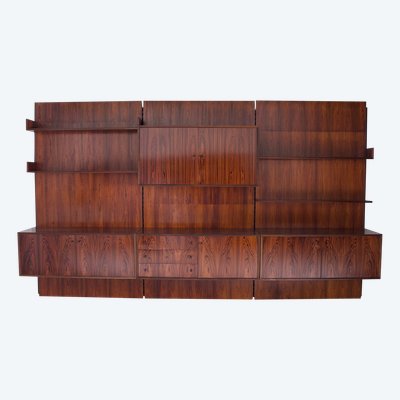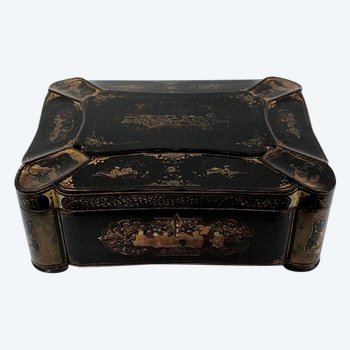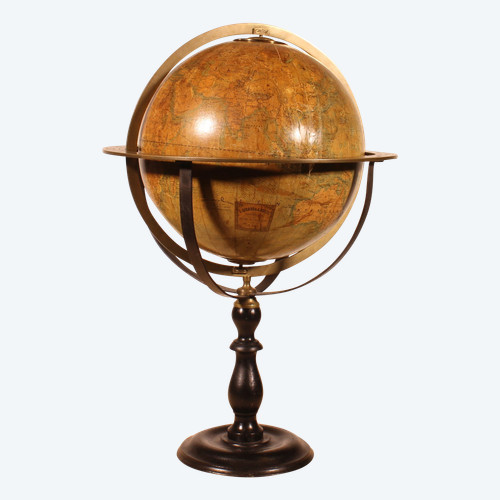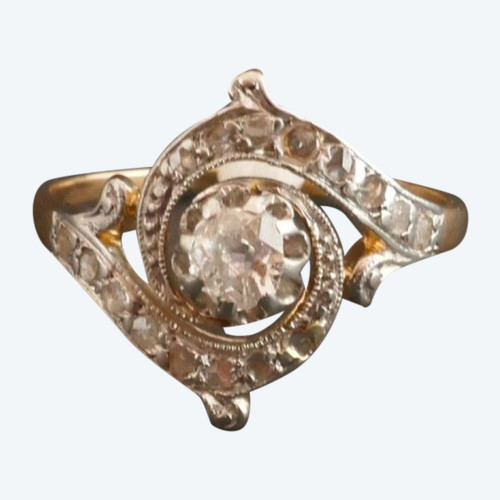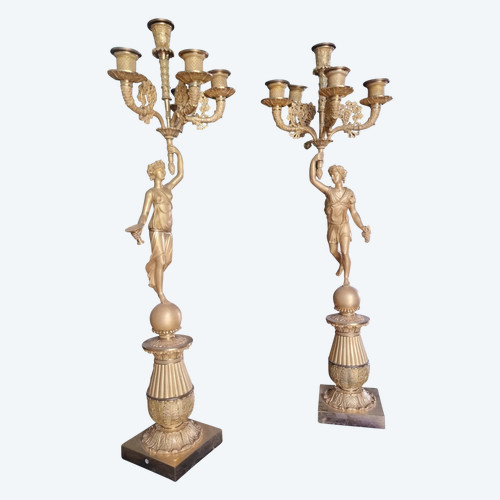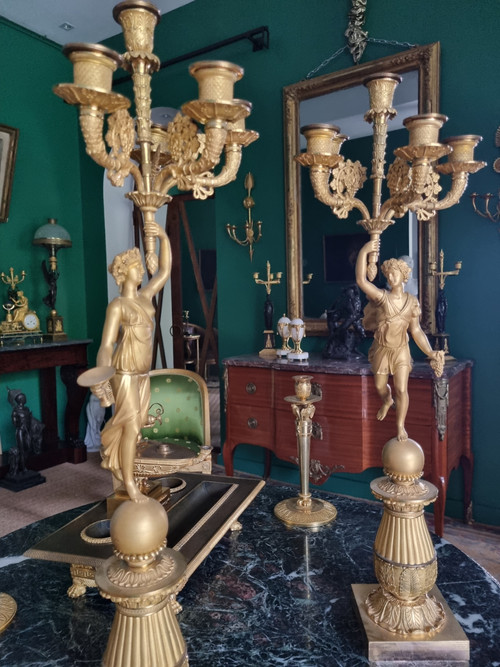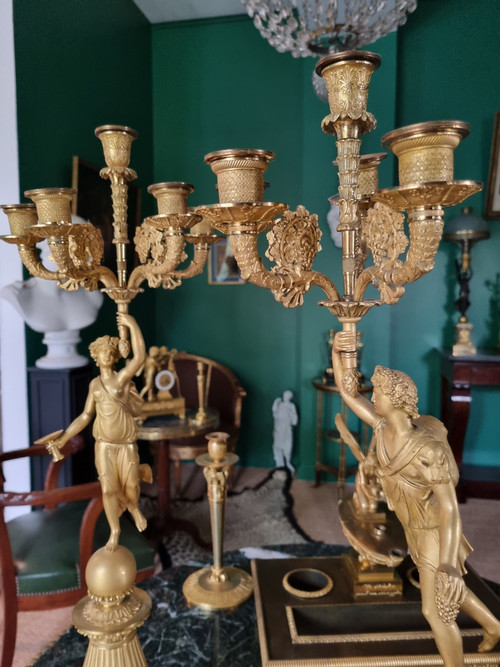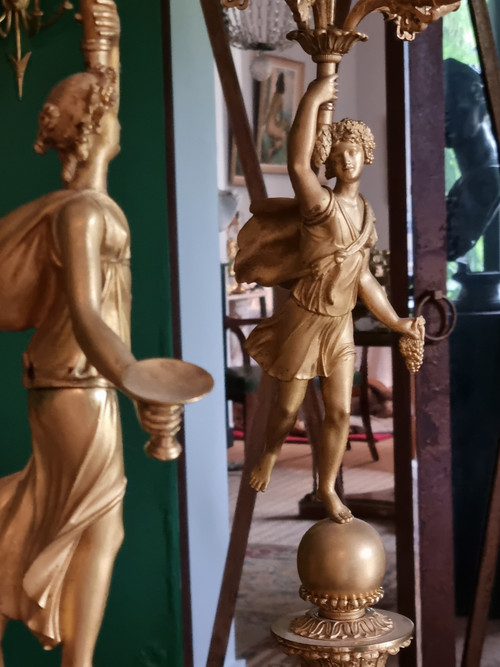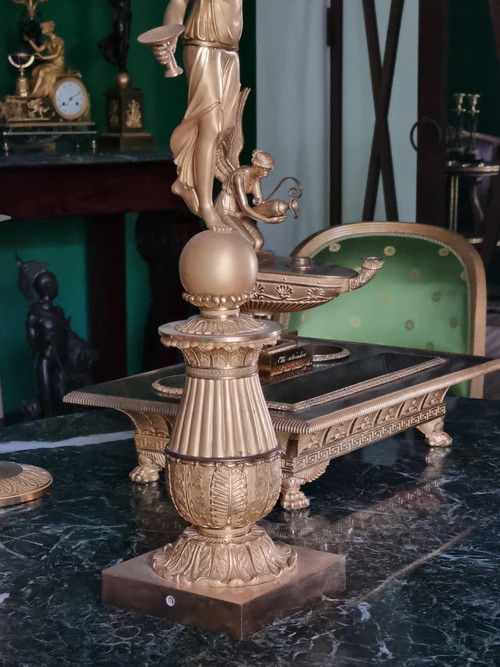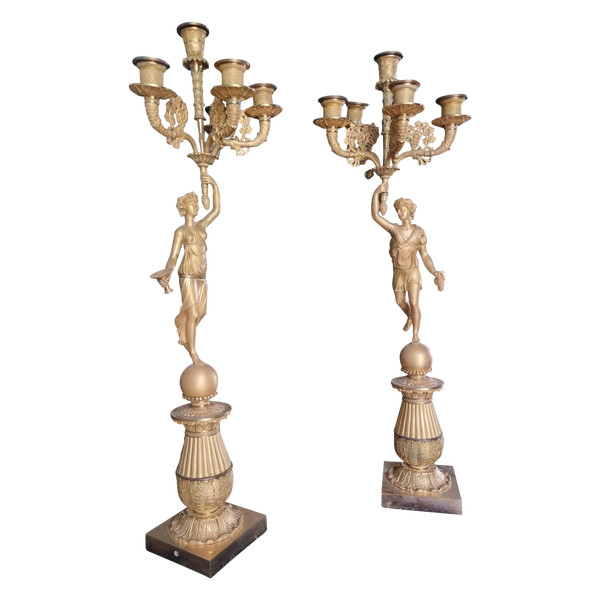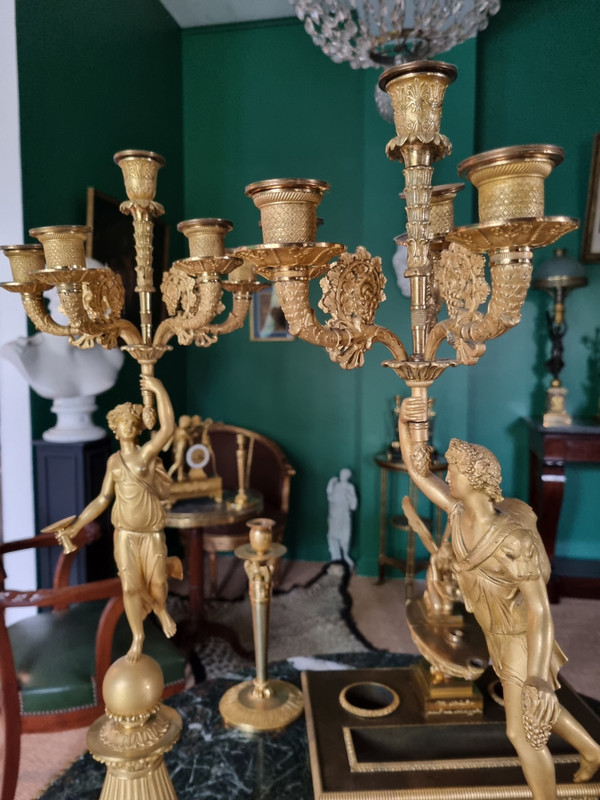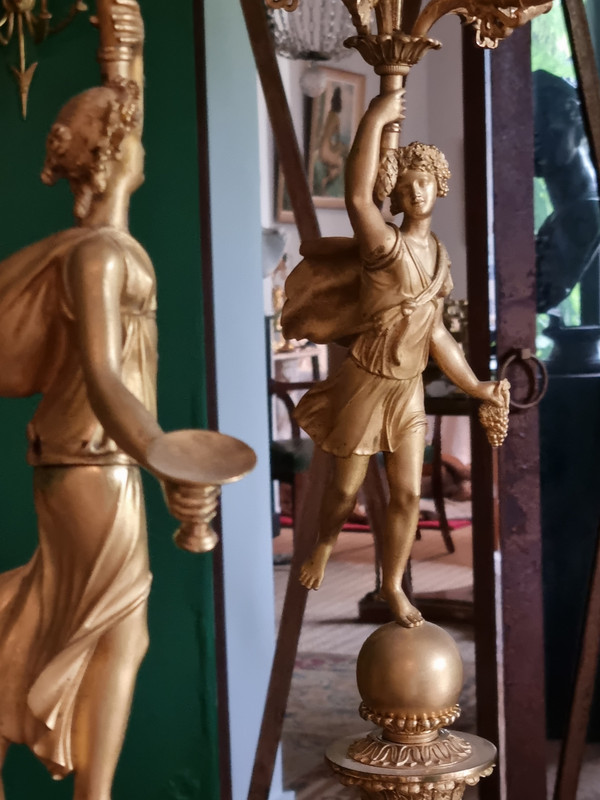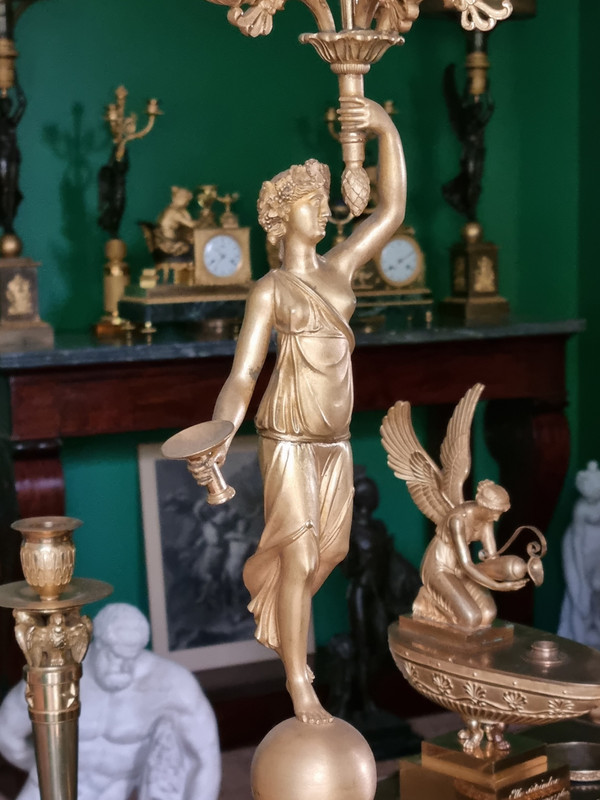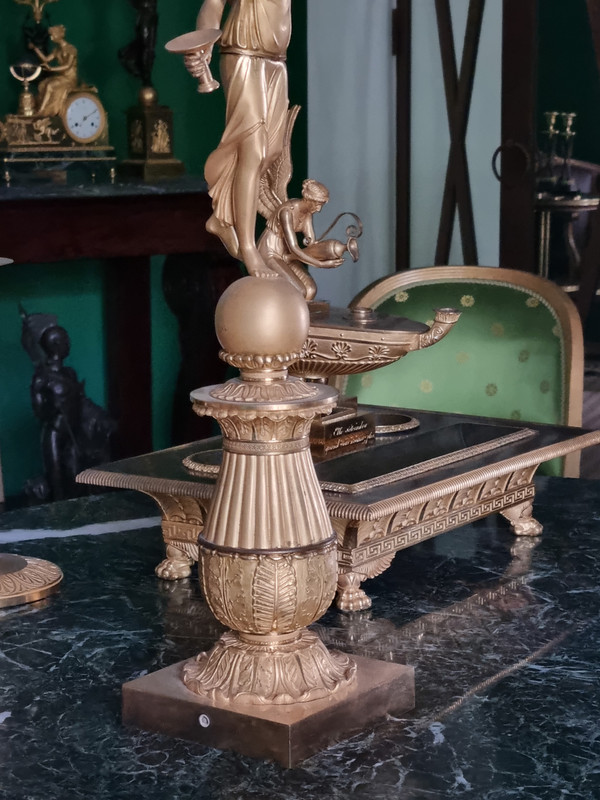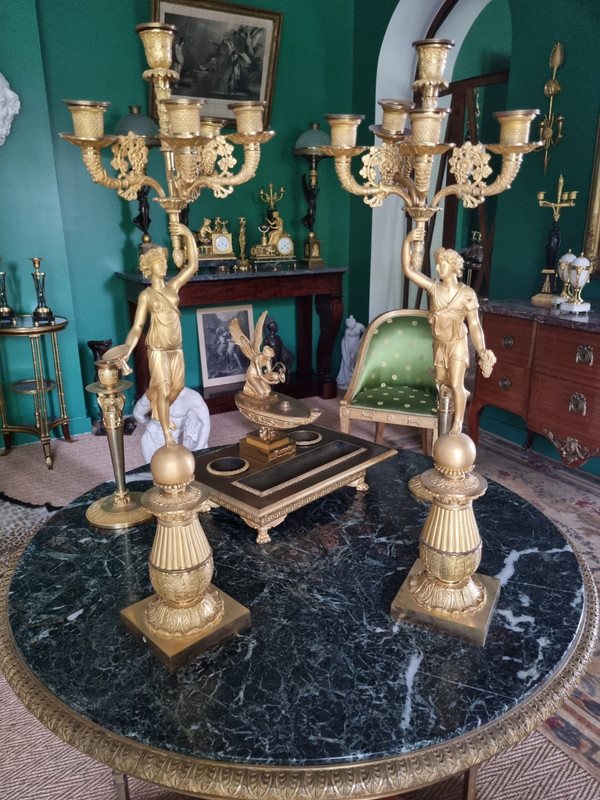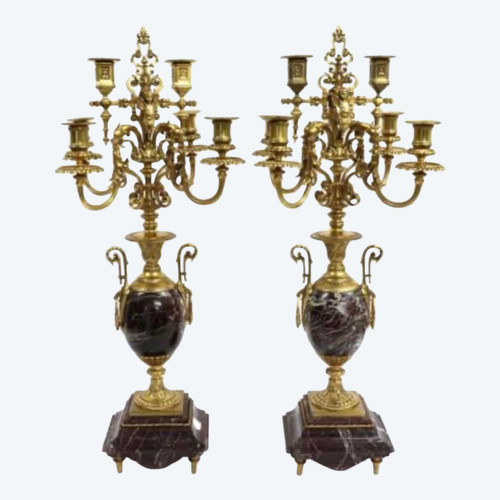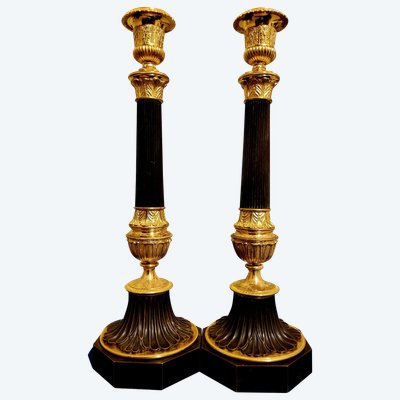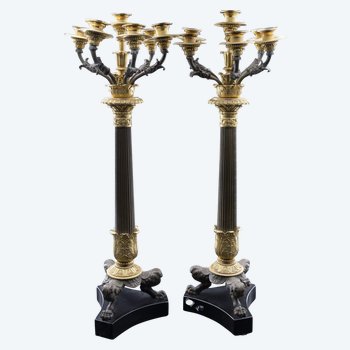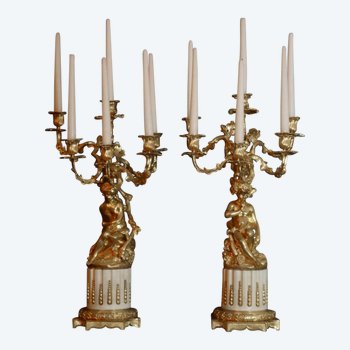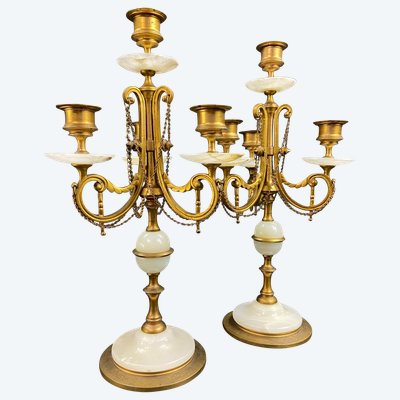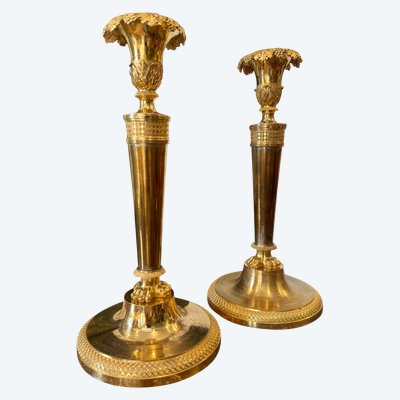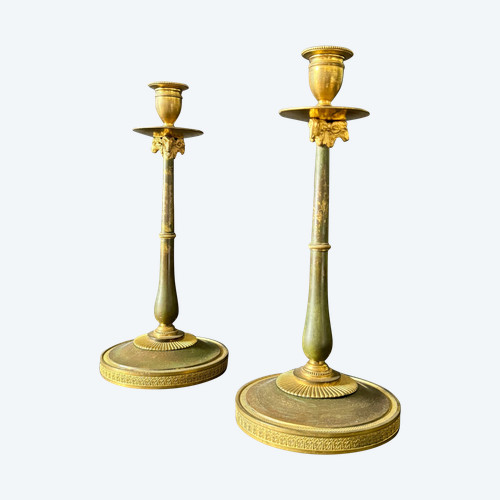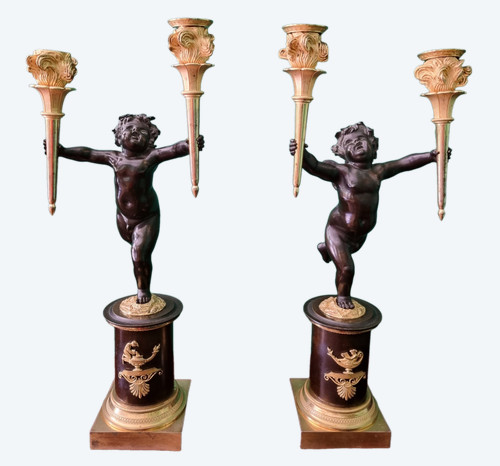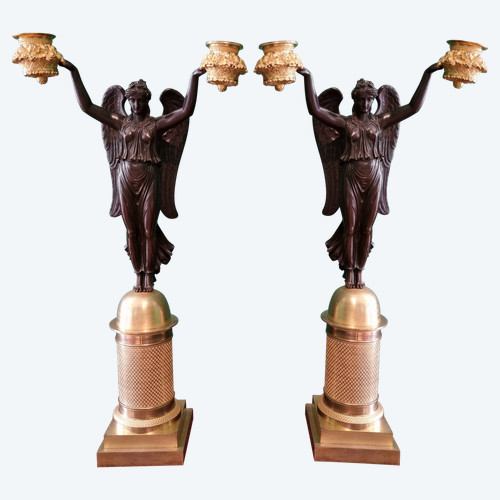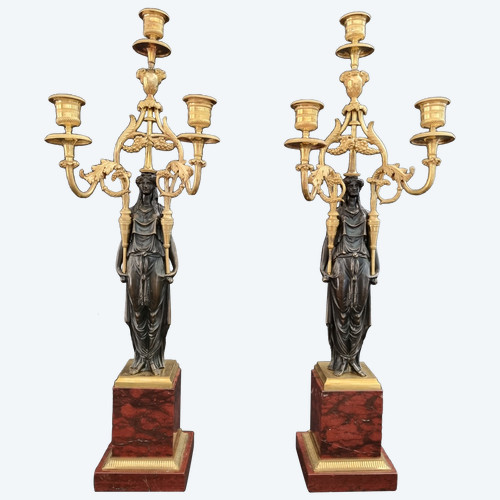This description has been translated and may not be completely accurate. Click here to see the original
An important pair of finely chased gilt bronze candelabra, late Empire/Restauration period, circa 1815-1820, with magnificent original gilding enhanced by skilful matting and burnishing, attributed to Louis Isidore Choiselat.
The candelabra represent the Greek god Dionysus and his wife, Princess Ariadne.
In one hand, Dionysus, dressed in a short chiton and a nebride, wearing a crown of leaves and bunches of grapes in his hair, holds a thyrse supporting four arms of light (the fifth being the top of the thyrse). With his other hand, the Greek god holds a bunch of grapes.
The richly decorated arms of light display all the attributes of the god of the vine: they begin with a large acanthus leaf, then are chiselled with scales and host a generous scroll of grape leaves and bunches of grapes. As they reach the cross-knurled bobèches, they are accented by cups decorated with palmettes and bouquets of flowers.
I'd like to draw your attention to this part of the candelabra: the chasing of all these elements is of great precision, which few bronzeworkers of the period could achieve.
Ariadne adopts a posture similar to that of Dionysus, just like him, with one hand supporting a thyrse from which four arms of light emerge (and a fifth at the top of the thyrse). With the other hand, she holds a beautiful tazza (cup, container). The princess also wears a long chiton, and a crown of leaves and bunches of grapes decorates her hair.
Each rests one foot on a sphere emerging from a leafy corolla and an ovoid base decorated with scales and stylized palmettes, ending in a square-section pedestal.
The most talented bronzemakers of the early 19th century took up the theme and aesthetics of these candelabra in different variants.
It is easy to relate this pair of candelabra to two others delivered by Louis-Isidore Choiselat (see reference in bibliography), while keeping in mind the great similarity of Choiselat and Thomire's chasing.
Thomire Duterme, both manufacturer and retailer, collaborated with Choiselat and Rabiat, whose products he sold to his prestigious clientele. As a result, certain pairs of candelabra made by one or other of Thomire's collaborators were automatically attributed to him. Such is the case of a pair of candelabra presented in my gallery a short while ago: attributed to Thomire Duterme, and signed Rabiat.
Very fine original gilding.
Perfect condition, base drilled for electrification.
Dionysos
Etymologically "Zeus of Nysa".
He is the adulterous son of Zeus and Semele.
Deceived by Hera, who presented herself to her as her nurse, Semele asked Zeus to show himself to her in his Olympian majesty. The god did so, to please her. But unable to bear the sight of lightning flashing around her lover, she was consumed by the flames escaping from Zeus.
Zeus quickly snatched the child from her womb, still only six months old. He immediately locked it in his thigh. When full term arrived, he took it out with Ilithye's help, perfectly alive. It was little Dionysus, the "twice-born" god.
As his legend evolved, so did his portrayal. At first, he was depicted as a bearded man in the prime of life. Later, he was portrayed as a beardless, effeminate ephebe, showing off the delicate nakedness of his adolescent body, half-covered in a nebride (panther or fawn skin) or wearing a long dress like women used to wear.
His head, with its long curly hair, is crowned with pampers and bunches of grapes; in one hand, he holds the thyrse, and in the other, grapes or a cup.
As his physiognomy was enriched by new additions, so his attributions expanded. Originally, Dionysus was simply the god of wine. Later, he became the god of vegetation and moist heat; then, he appeared as the god of pleasures, the god of civilization.
In Greek mythology, Dionysus traveled extensively, even as far as India, and spread his cult throughout Greece.
It was when he arrived on the island of Naxos, where he stayed for a time, that he fell in love with Ariadne and married her (after Theseus had abandoned her).
When Ariadne died, Dionysus transformed her wedding tiara into the constellation Couronne boréale in her memory.
Ariadne
In Greek mythology, Ariadne is the daughter of Minos, king of Crete (son of Zeus and Europa) and Pasiphae (daughter of Helios, god of the sun).
Ariadne is mentioned in the Iliad as a mortal princess.
The two main forms of her name can be traced back to one root: "to be/to make pleasant", represented in Greek as "to be".
Ref: OS6H0L60IG
 Modular wall shelf in rosewood.
4.800 € EUR
Modular wall shelf in rosewood.
4.800 € EUR
 Art Nouveau Diamond Ring.
1.220 € EUR
Art Nouveau Diamond Ring.
1.220 € EUR

